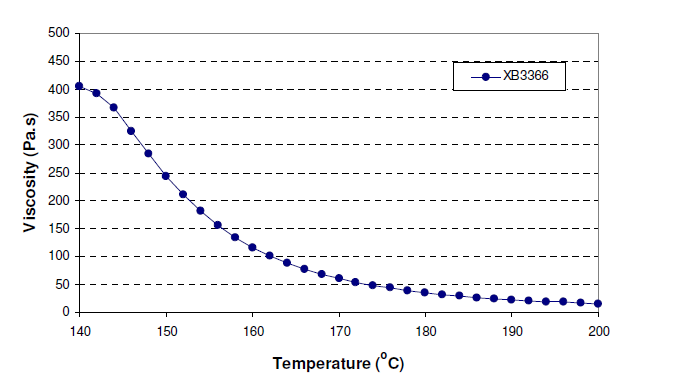Enhanced TDS
Identification & Functionality
- Blend
- No
- CAS Number
- 25068-38-6
- Chemical Family
- Chemical Name
- Composite Materials Functions
- Function
- Resins, Binders & Matrix Materials
- Polymer Name
- Single Ingredient
- Yes
- Synonyms
- (Chloromethyl)oxirane-4,4′-(1-methylethylidene)bisphenol copolymer, 1-Chloro-2,3-epoxypropane-4,4′-isopropylidenebisphenol polymers, 1-Chloro-2,3-epoxypropane-4,4′-isopropylidenediphenol polymer, 2,2-Bis(4-hydroxyphenyl)propane-epichlorohydrin copolymer, 2,2-Bis(4-hydroxyphenyl)propane-epichlorohydrin polymer, 2,2-Bis(hydroxyphenyl)propane-epichlorohydrin copolymer, 2,2-Bis(p-hydroxyphenyl)propane-epichlorohydrin condensate, 2,2-Bis(p-hydroxyphenyl)propane-epichlorohydrin copolymer, 2,2-Bis(p-hydroxyphenyl)propane-epichlorohydrin polymer, 2,2-Diphenylolpropane-epichlorohydrin polymer, 4,4′-Dihydroxydiphenylpropane-epichlorohydrin polymer, 4,4′-Isopropylidenediphenol-1-chloro-2,3-epoxypropane polymer, 4,4′-Isopropylidenediphenol-epichlorohydrin copolymer, 4,4′-Isopropylidenediphenol-epichlorohydrin polymer, Bis(p-hydroxyphenyl)dimethylmethane-epichlorohydrin copolymer, Bisphenol A-(chloromethyl)oxirane copolymer, Bisphenol A-epichlorohydrin condensate, Bisphenol A-epichlorohydrin copolymer, Bisphenol A-epichlorohydrin epoxy resin, Bisphenol A-epichlorohydrin polymer, Bisphenol A-epichlorohydrin resin, Bisphenol a-epichlorohydrin-benzyl alcohol copolymer, Bisphenol a-epichlorohydrin-dibenzylamine copolymer, Bisphenol A-epichlorohydrine copolymer, Bisphenol A-glycidyl chloride copolymer, Bisphenol A-p-cumylphenol-epichlorohydrin copolymer, Dian-epichlorohydrin copolymer, Dian-epichlorohydrin polymer, Diphenylolpropane-epichlorohydrin copolymer, Diphenylolpropane-epichlorohydrin polymer, Epichlorohydrin-2,2-bis(4-hydroxyphenyl)propane copolymer, Epichlorohydrin-2,2-bis(4-hydroxyphenyl)propane polymer, Epichlorohydrin-4,4′-dihydroxydiphenylpropane copolymer, Epichlorohydrin-4,4′-isopropylidenediphenol copolymer, Epichlorohydrin-4,4′-isopropylidenediphenol polymer, Epichlorohydrin-bisphenol A copolymer, Epichlorohydrin-bisphenol A epoxy resin, Epichlorohydrin-bisphenol A polymer, Epichlorohydrin-bisphenol A resin, Epichlorohydrin-diphenylolpropane polymer, NSC 11096
- Technologies
- Product Families
Features & Benefits
- Labeling Claims
- Materials Features
Applications & Uses
- Composites End Use
Properties
- Physical Form
Regulatory & Compliance
- Certifications & Compliance
- Chemical Inventories
Technical Details & Test Data
- Viscosity vs Temperature Graph

Safety & Health
- Handling and Safety Information
Forced ventilation and dust masks or respirators should be used to ensure that operatives do not breath in dust generated by the system.
Personal hygiene
Safety precautions at workplace:
protective clothing - yes
gloves - essential
arm protectors - recommended when skin contact likely
goggles/safety glasses - yes
Skin protection:
before starting work - Apply barrier cream to exposed skin
after washing - Apply barrier or nourishing cream
Cleansing of contaminated skin:
Dab off with absorbent paper, wash with warm water
and alkali-free soap, then dry with disposable towels.
Do not use solvents
Disposal of spillage:
Soak up with sawdust or cotton waste and deposit in
plastic-lined bin
Ventilation:
of workshop - Renew air 3 to 5 times an hour
of workplaces - Exhaust fans. Operatives should avoid inhaling
vapours
Packaging & Availability
- Regional Availability
Storage & Handling
- Storage and Handling Information
Provided that the product described above is stored in a dry place in its original, properly closed container. At the above mentioned storage temperature it will have the shelf live indicated on the label. The product should not be stored exposed to direct sunlight. Partly emptied containers should be closed immediately after use.
Other
- Appearance
- White powder
- Color (SDS)
- White
- Odor (SDS)
- Odorless
- Chemical Properties
Value Units Test Method / Conditions Hydroxyl Value 3.1 Eq/kg ISO/DIS 4629 - Physical Properties
Value Units Test Method / Conditions Density 1.17-1.19 g/cm³ ISO 8130-3 at 25°C Flash Point min. 215.0 °C ISO 2592 Glass Transition Temperature (Tg) 75.0-85.0 °C Melting Point 150.0 °C
